
Postmodernism style in interior design - a game without rules
Postmodernism style in interior design (derived from French "Postmodernisme" - "after modernism") is a vibrant, playful, and bold movement in interior design. Postmodernism style encompasses a variety of characteristics - a touch of avant-garde, a hint of eclecticism, a splash of historical interiors. That's why it boldly breaks all the templates and disregards conventions.
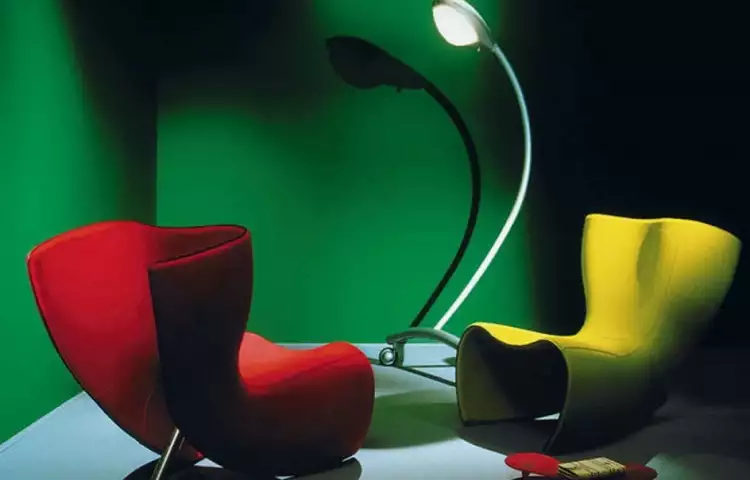 Postmodernism in interiors. Postmodern design armchairs
Postmodernism in interiors. Postmodern design armchairs
Postmodernism style in interior design is a perfect choice for dreamers and people who don't take themselves, their belongings, or the world too seriously. That's why you often find unimaginable and seemingly incompatible forms, textures, and colors in postmodernist interiors. However, all these elements complement and enhance each other's uniqueness.
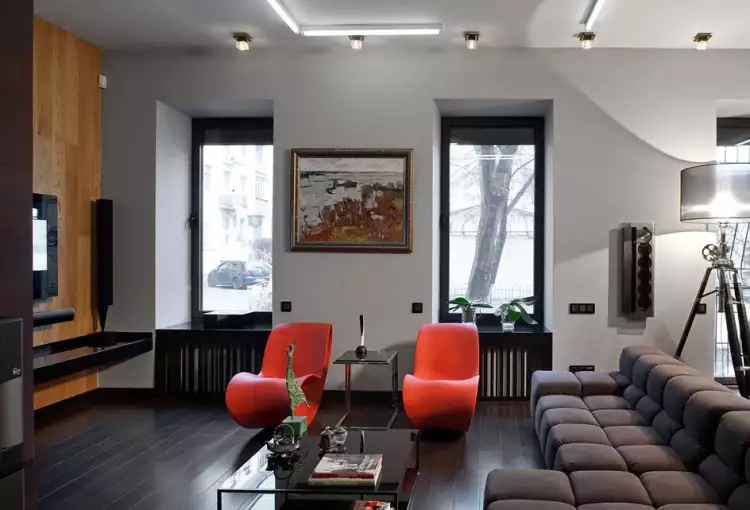 Postmodernism in interiors. Postmodern flat interiors
Postmodernism in interiors. Postmodern flat interiors
Key characteristics and features of postmodernism in interior design
Postmodernism style in interior design is relatively young, and therefore it is not constrained by conventions; it is eclectic. It has successfully combined and balanced features from various other interior styles - contemporary, historical, ethnic. However, this does not mean that there are no rules at all.
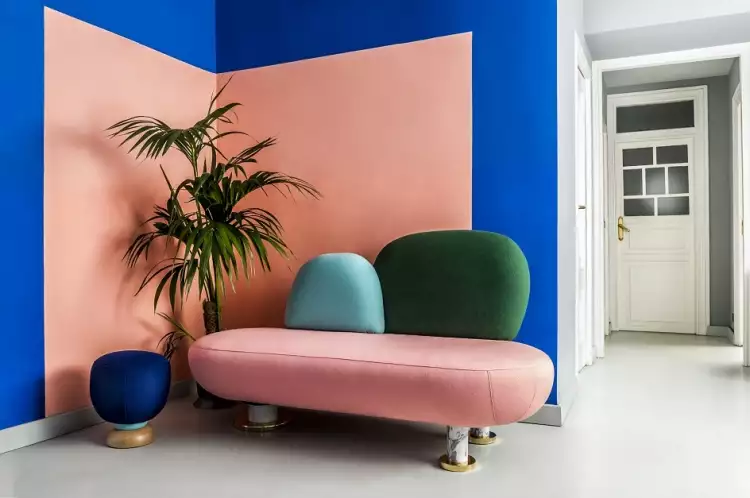 Postmodernism in interiors. Postmodernism style entrance hall interior
Postmodernism in interiors. Postmodernism style entrance hall interior
The postmodernism style in interior design has distinct characteristics:
- Architecture of space and forms. Postmodernism gravitates towards spaciousness and informality. There should be plenty of air - to breathe easily without compromising comfort. This means large rooms, huge windows, and wide doorways. All lines are dynamic and clean, free and light, where asymmetry and symmetry not only coexist but also blend harmoniously.
- Finishes. There are no strict norms here. Do you want metallic or plastic inserts on the walls? Great idea! Multi-level, asymmetrical ceilings? Excellent! Why not decorate one wall with airbrushing and add niches with lighting to another? Let's give it a try! Imagination is welcomed and encouraged. The main thing is not to forget that the walls, ceiling, and floor serve as a backdrop for the creative interior and should not overpower it.
- Color schemes. There are no strict rules regarding color palettes. Vibrant colors, metallics, and even iridescence are welcome. It is important for bold accents not to strain the eyes, not to appear provocative, to be used sparingly, and balanced with neutral shades such as beige, gray, or sandy tones.
- Textures and materials. It's all about playing with contrasts. Heavy velvety textures coexist with light and airy ones, rough with delicate and weightless, smooth with rough, matte with glossy. Combinations of textures, like shades, resemble theatrical scenery. But not the stage where they perform "King Lear" or "Hamlet." Rather, it is a stage where a light and witty comedy of situations unfolds, with carefully chosen decor that becomes part of the spectacle.
- Materials. Once again, there are no conventions. Wood and polished metal, weathered bronze and plastic, glass and paper, concrete and velvet, fur and rattan - anything goes. Postmodernism is democratic; the value of materials does not play a leading role.
- Furniture. The main thing is not to hold back. Chairs made of transparent plastic coexist with asymmetrical tables, lightweight lounges and sofas with dense upholstery coexist with ethereal shelves and futuristic poufs. "Combine the incompatible" is the motto of postmodernism.
- Textiles. Once again, imagination takes flight. A carpet with African ornaments, pillows with beaded embroidery, fabric upholstery for tabletops. The abundance of textiles should not overwhelm the space. It's better to avoid heavy curtains, ruffles, and elaborate draperies.
- Decorative elements. Unusual contemporary sculptures make excellent companions for classical vases, geometric patterns and floral prints blend beautifully with reproductions of Dadaists, Cubists, and abstract artists. Living plants in unique vases complement the interior in the postmodernism style. The main principle to follow when choosing decor is a sense of proportion and common sense.
- Lighting. Abundance of light has become the hallmark of the style. Huge windows, hidden LED strips along the ceiling and floor, floor lamps and sconces, spotlights - there should be truly ample lighting.
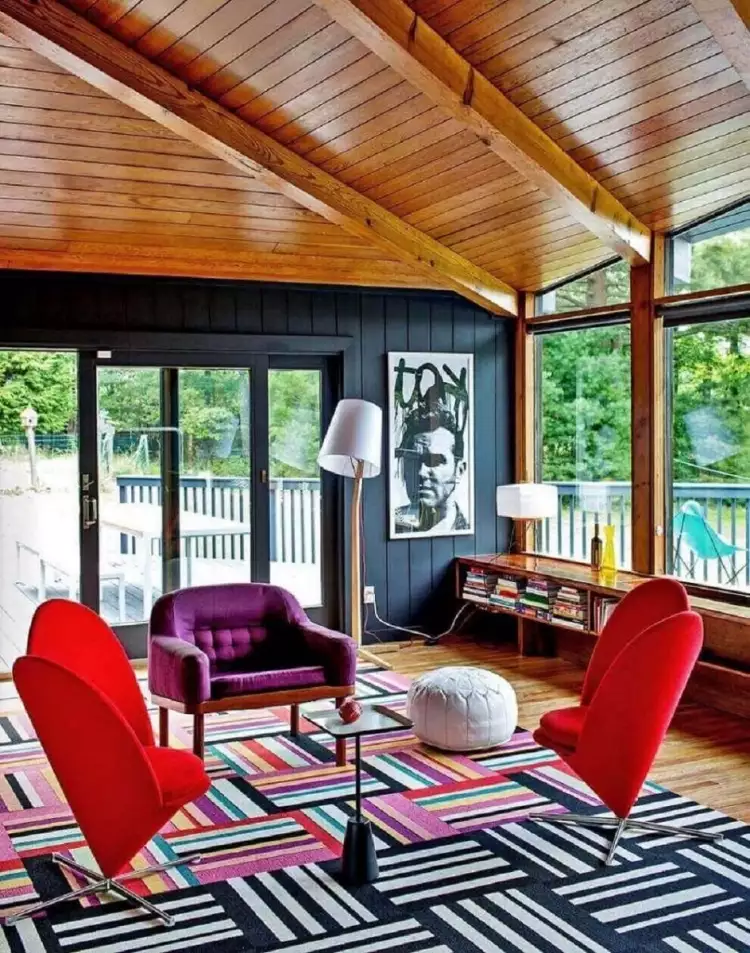 Postmodernism in interiors. Postmodernism style armchairs and textiles
Postmodernism in interiors. Postmodernism style armchairs and textiles
The history of the postmodernism style
Postmodernism as a cultural phenomenon emerged in the middle of the last century and quickly spread to many spheres. The cornerstones of the style - the use of exaggerated forms and an ironic attitude towards everything, i.e., deconstructivism, found followers in all directions.
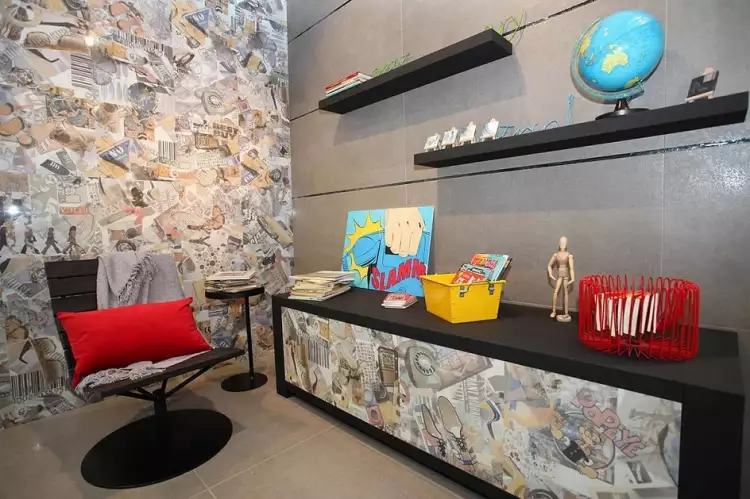 Postmodernism in interiors. Postmodernism style office interior
Postmodernism in interiors. Postmodernism style office interior
In literature, the flag bearers of postmodernism were Hermann Hesse with "The Glass Bead Game," Umberto Eco with "The Name of the Rose," Jorge Luis Borges, in cinema, its proponents declared themselves to be Brian De Palma, Martin Scorsese, and, slightly later, Quentin Tarantino. Artists such as Joseph Beuys, Francesco Clemente, and many others worked in the style of postmodernism.
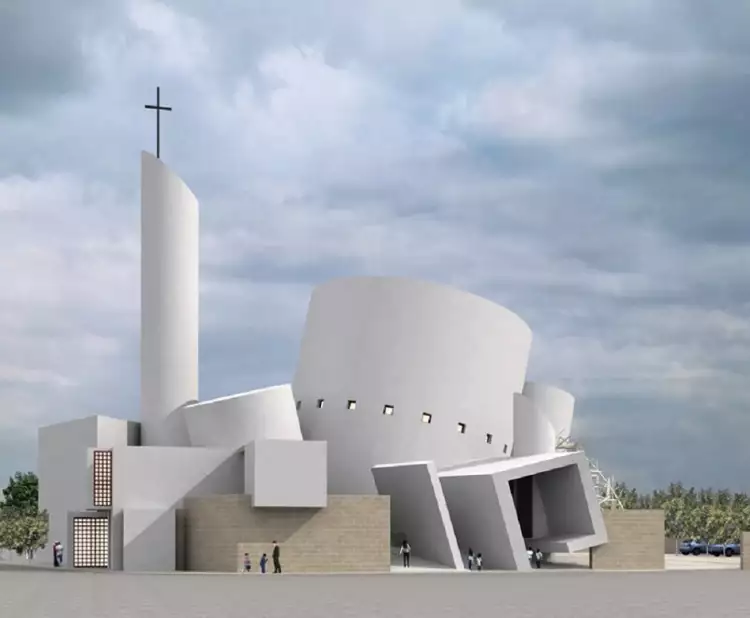 Postmodernism in interiors. Al Farrug Church, architect Richard England
Postmodernism in interiors. Al Farrug Church, architect Richard England
Postmodern architecture also developed actively - the ideas of rejecting formalism and creatively reinterpreting the legacy of modernism were promoted by Frank Gehry, Richard England, and Philip Johnson. Since the 1970s, postmodernism has also entered private interiors.
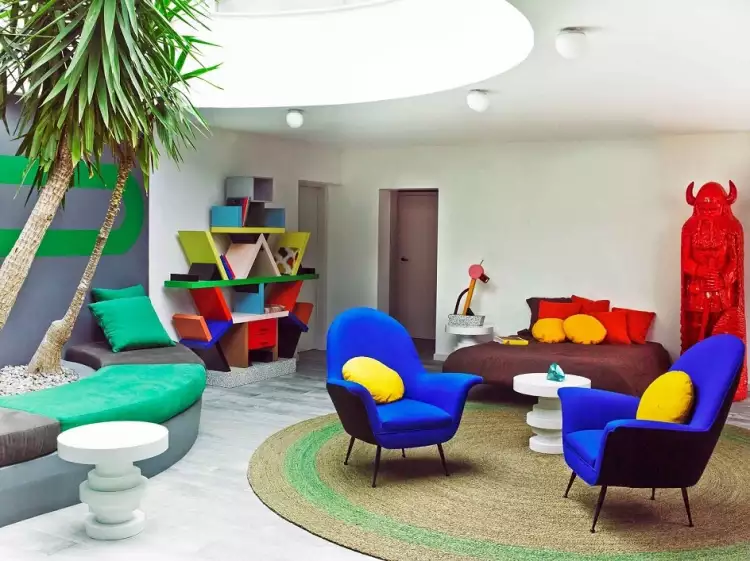 Postmodernism in interiors. Interior of a postmodern lounge
Postmodernism in interiors. Interior of a postmodern lounge
The postmodernism style in interior design is youthful, vibrant, and rebellious. Today, it is dynamically evolving and undergoing refinement. Its originality and marginality, in the best sense of the word, continue to find followers worldwide.
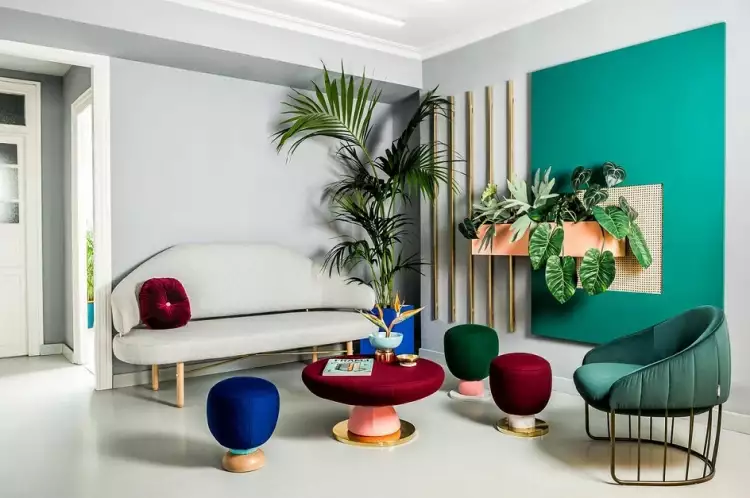 Postmodernism in interiors. Interior of a Postmodernist lounge
Postmodernism in interiors. Interior of a Postmodernist lounge
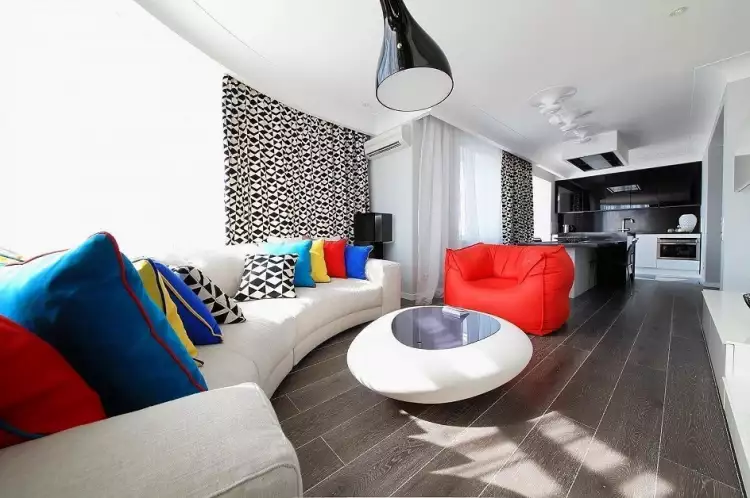 Postmodernism in interiors. Postmodernism kitchen interior
Postmodernism in interiors. Postmodernism kitchen interior
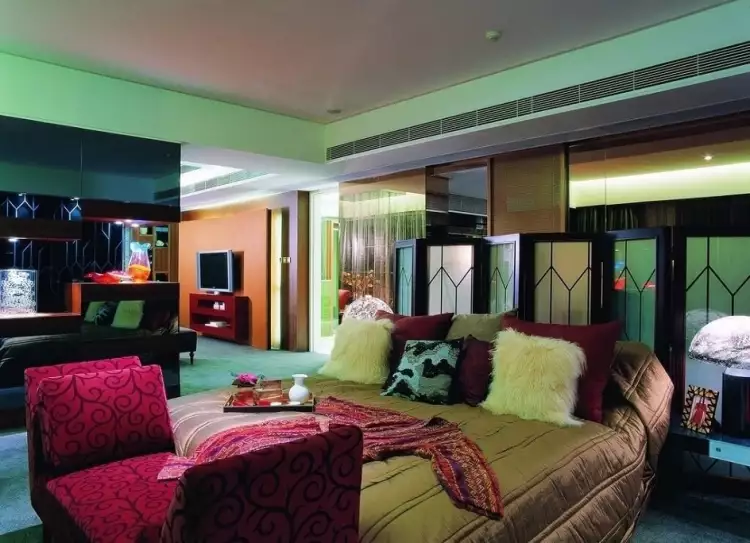 Postmodernism in interiors. Postmodernism style bedroom interior
Postmodernism in interiors. Postmodernism style bedroom interior
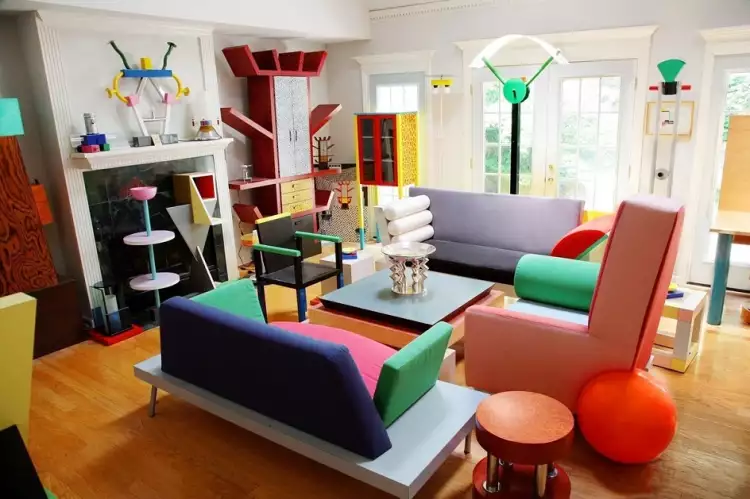 Postmodernism in interiors. Postmodernism style living room interior
Postmodernism in interiors. Postmodernism style living room interior
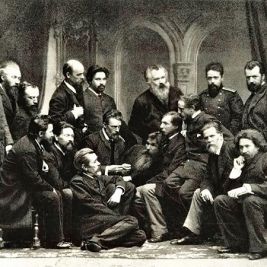 Peredvizhniki: Revolution in Russian Art of the 19th century
Peredvizhniki: Revolution in Russian Art of the 19th century  The painting "Bay of Naples" by Ivan Konstantinovich Aivazovsky is an invitation to immerse yourself in the serene beauty of a southern evening
The painting "Bay of Naples" by Ivan Konstantinovich Aivazovsky is an invitation to immerse yourself in the serene beauty of a southern evening  Marine landscape is the most romantic genre of visual art: history, artists, and paintings
Marine landscape is the most romantic genre of visual art: history, artists, and paintings 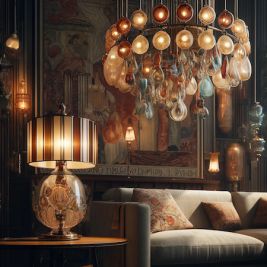 Current Popular Items in the Antique Market
Current Popular Items in the Antique Market  Top 10 Most Iconic Sculptors in the World
Top 10 Most Iconic Sculptors in the World 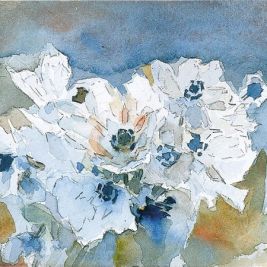 Watercolor - the airy lightness of the rainbow: types, techniques, history
Watercolor - the airy lightness of the rainbow: types, techniques, history 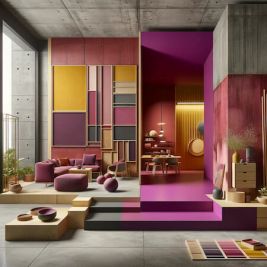 Emerging Color and Material Trends in Architecture for 2023
Emerging Color and Material Trends in Architecture for 2023 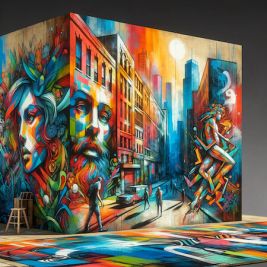 Street Art and Neo-Expressionism: Vital Art Trends of 2023
Street Art and Neo-Expressionism: Vital Art Trends of 2023  The painting "The Beekeeper" by Ivan Kramskoi is an expressive peasant figure against the backdrop of a landscape
The painting "The Beekeeper" by Ivan Kramskoi is an expressive peasant figure against the backdrop of a landscape  Grisaille is a unique monochromatic art with stunning possibilities
Grisaille is a unique monochromatic art with stunning possibilities